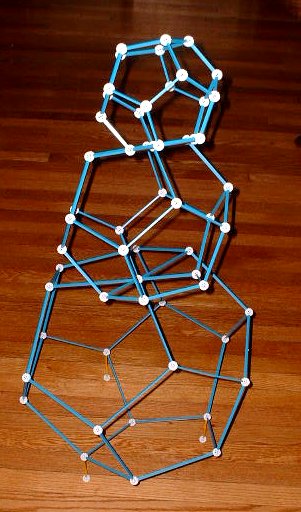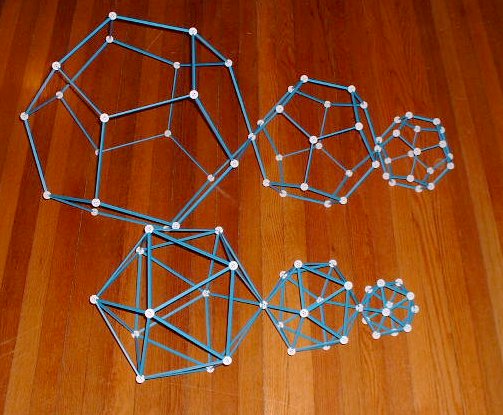



You can visualize the surrounding cone more clearly if you notice that certain faces in the above images are coplanar. This interesting phenomenon can be seen more clearly when the snow-man and snow-woman go to bed:

They are lying here on the floor together (just talking). Notice
that one pentagon from each dodecahedron lies in the floor plane.
Also, one triangle from each icosahedron lies in the floor plane.
While one could design towers with any scaling factor, only the golden
ratio results in these coplanarity relationships. This property for
the tau-scaled icosahedron tower was pointed out to me by Richard Benish
(who showed me a nice six-layer paper model) and I observed that it follows
as well for a tau-scaled dodecahedron tower. One way to prove it
is to invoke the observation by Pappus that the vertices of a dodecahedron
lie by fives in four parallel planes and the vertices of an icosahedron
lie by threes in the same four planes. Pappus was looking at them
inscribed in the same sphere, but all we really need is to notice that
the distance between planes 1 and 2 (or 3 and 4) is tau times the distance
between planes 2 and 3. So scaling down by tau brings the 3rd plane
of the smaller neighbor even with the second plane of the larger neighbor,
and everything else follows easily.